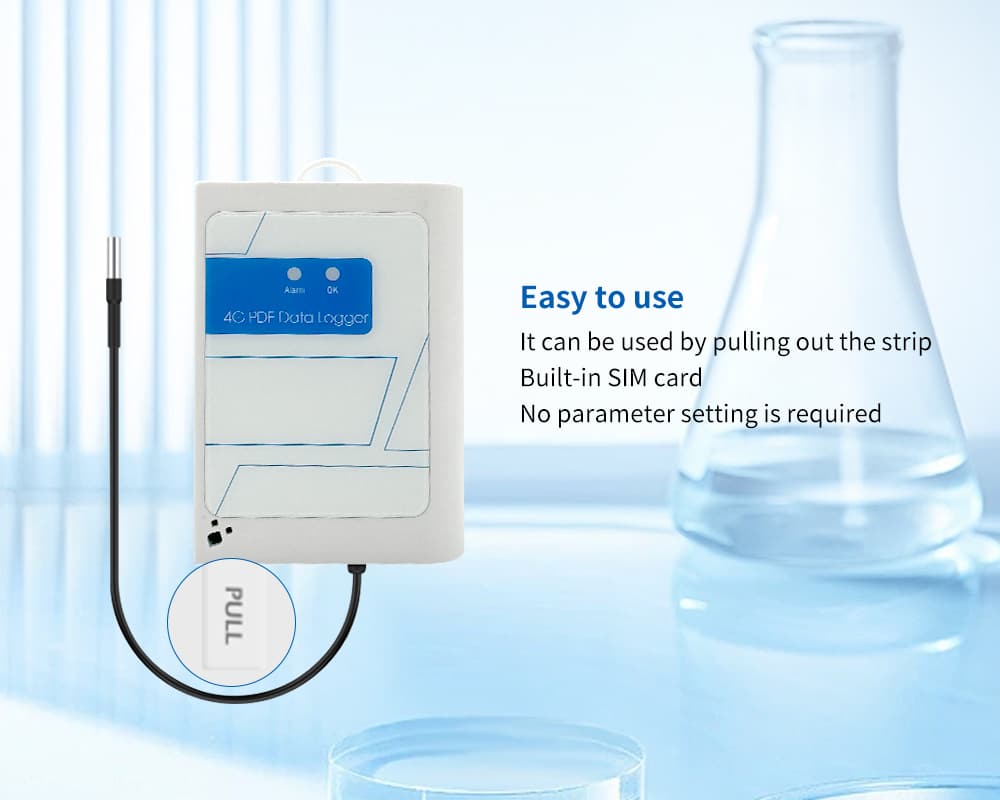LoRa temperature sensors are devices that use LoRaWAN (Long Range Wide Area Network) technology to transmit temperature data wirelessly over long distances. IoT (Internet of Things) applications rely heavily on LoRa as a low-power wide area network protocol that enables communication up to several kilometers. This is ideal for remote sensor networks used in distribution.
The main feature of LoRa temperature sensors is their long-range capability, where LoRa sensors can transmit data over distances of up to 15 to 20 km in rural areas and 2-5 km in urban areas. This is very practical for applications in large facilities, agricultural land, or outdoor monitoring.
These temperature sensors also use a wireless communication method that can send temperature readings to the LoRaWAN gateway, which then forwards the data to a cloud platform for processing and monitoring. The monitoring process is in real time, which is useful for tracking various environments, whether it’s an industrial location, warehouse, agriculture, or environmental monitoring.
Contents
How LoRa Temperature Sensors Work
LoRa temperature sensors operate by utilizing LoRa (Long Range) technology to transmit temperature data wirelessly over long distances with low power consumption. The general working principle of a LoRa temperature sensor involves several sequential stages as follows:
Temperature Measurement
A temperature sensor, such as a thermistor or digital sensor, detects the ambient temperature and converts it into an electrical signal that the microcontroller can easily read. There are two key aspects to consider at this stage: the selection of the temperature sensor and the measurement principle.
You can choose to use a temperature sensor such as a thermistor, thermocouple, or digital sensor to measure the ambient temperature. Most LoRa systems use digital sensors because they provide accurate temperature readings and are easy to process. The measurement principle involves detecting changes in resistance (for thermistors) or digital signals (for digital sensors).
Data Processing
Next, the microcontroller on the LoRa sensor receives data from the temperature sensor and processes it as needed. You can format this temperature data to make it more suitable, such as in the form of a digital value that shows the temperature in degrees Celsius or Fahrenheit.
After processing the temperature data, the microcontroller sends the data via the LoRa module. This LoRa module converts digital data into radio frequency (RF) signals.
Data Transmission
The radio frequency signal travels through the LoRa antenna to the receiver located far away. LoRa is capable of sending data over several kilometers, depending on environmental conditions and device configuration.
On the receiver side, a LoRa gateway receives signals from the sensor and forwards them to a central system, such as a server or cloud application. This allows you to analyze, monitor, or store the data later.
Benefits of LoRa Temperature Sensors in Remote Monitoring in Various Applications
LoRa temperature sensors offer a range of benefits in remote monitoring across various applications. This is due to the combination of temperature sensor technology with energy-efficient LoRa connectivity that can connect devices remotely. Here are the main benefits of using LoRa temperature sensors in remote monitoring:
Long Range
LoRa has long-distance communication capabilities that can reach several kilometers depending on environmental conditions. This allows temperature monitoring from remote locations, such as very large agricultural fields of up to 100 hectares, industrial buildings, or other remote facilities without the need for cellular or Wi-Fi network infrastructure.
Energy Efficiency
LoRa uses low power, allowing devices to operate for several years on a small battery. Areas with very long distances, remote locations, and without access to electricity can optimize the use of these temperature sensors.
LoRa operates within a LoRaWAN (Long Range Wide Area Network) framework, which allows connections between various sensors over a wide area. This is useful in applications such as smart farming, temperature monitoring in large warehouses, or environmental monitoring in isolated areas.
Real-Time Monitoring
LoRa temperature sensors allow data to move in real-time to the monitoring platform. This enables rapid responses to critical temperature changes, which is crucial for managing the temperature of storage rooms or environmental conditions in agriculture or livestock.
Various applications of LoRa temperature sensors include energy management, where they can monitor the temperature in buildings or factories for energy efficiency, and environmental monitoring, where they can track air or water temperature to detect climate change or other environmental problems.
High Scalability With Low Cost
The LoRa system allows for easy addition of more sensors. If you need to expand the temperature sensor network in a wider area, LoRa temperature sensors are an excellent choice. You only need to spend minimal costs and effort due to the flexible capabilities of the LoRa network.
LoRa is generally more cost-effective in terms of both hardware and operational costs compared to other long-distance communication solutions such as cellular or satellite networks. This makes it more affordable for large-scale implementation, especially for temperature monitoring in distributed locations.
LoRa Data Loggers
HLY Technology Co., Ltd products also use LoRa temperature sensors to monitor temperature in difficult locations with the ability to operate over long distances, energy efficiency, and low cost. This technology supports a variety of applications that require continuous and efficient temperature monitoring. You can rely heavily on our data loggers with flexible LoRa technology.


